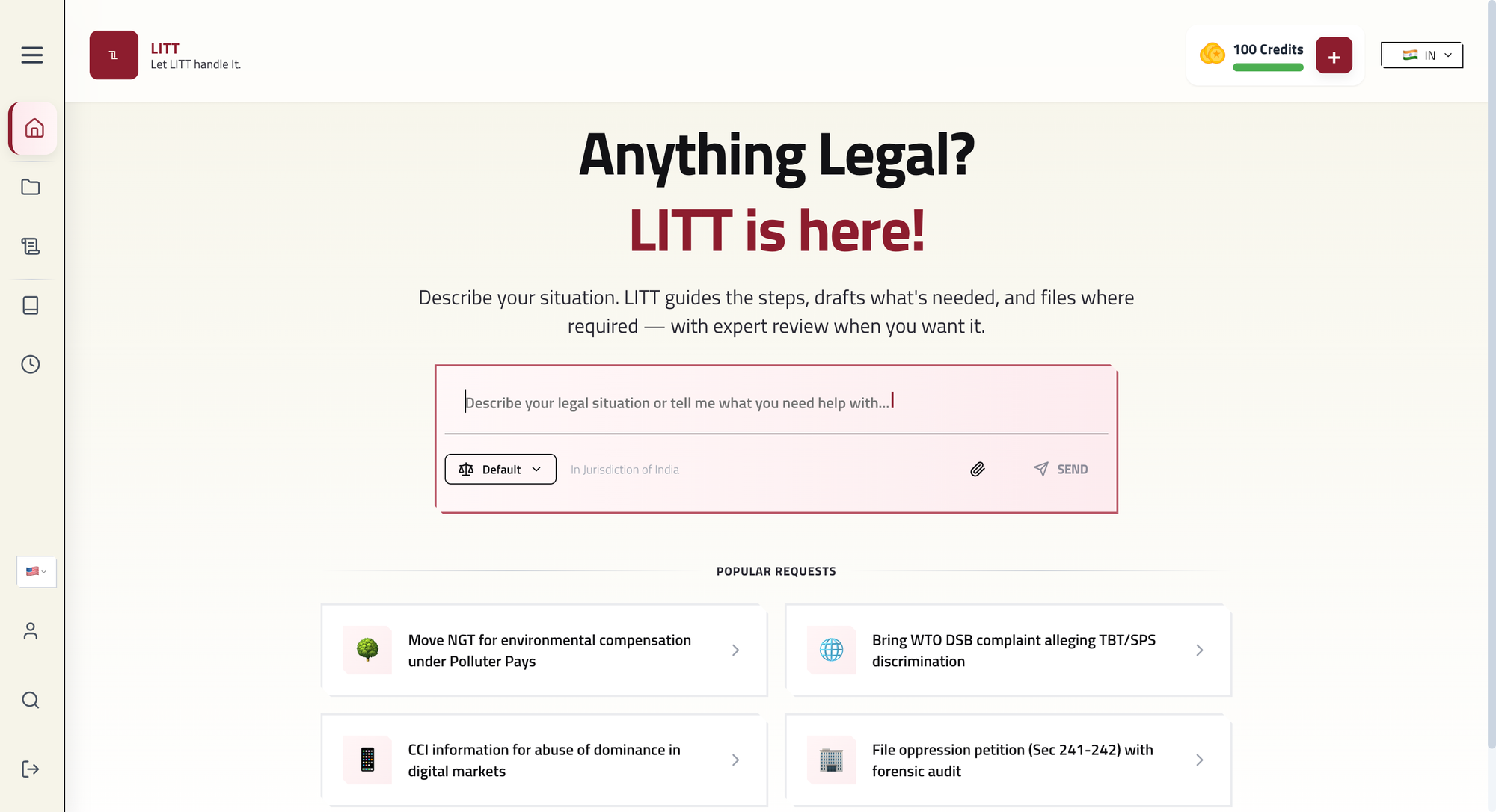Rwanda's Gacaca courts were a unique transitional justice mechanism aimed at addressing the 1994 genocide. These community-based courts prioritized reconciliation over retribution, fostering dialogue and healing. Despite criticism, they played a crucial role in post-genocide justice.

Automated compliance and legal drafting
Introduction
Legal systems around the world have been structured in a transactional manner. While the laws are different regionally, the justice model is similar. Rwanda aimed to change this very structure by introducing Transitional Justice mechanisms for delivering justice. Transitional justice is a framework that addresses the aftermath of extensive human rights violations by introducing reconciliation and societal healing in the community. This reconciliation approach encompasses several mechanisms to address past abuses, such as truth commissions, reparations programs, and judicial processes.
Transitional Justice seeks to restore trust in political and legal institutions, which is significant in a post-conflict setting. Rwanda adopted it as a legal mechanism to serve as a tool for society grappling with the aftermath of genocide. Fostering accountability is challenging and demanding, especially for a country trying to rebuild itself. Effective transitional justice mechanisms can facilitate societal cohesion by providing a platform for victims to voice their experiences and allowing the perpetrators to come forward and take responsibility for their actions.
Rwanda established Gacaca courts to address the genocide that occurred in 1994. These courts were community-based and aimed to promote reconciliation among the local population. Genocide is rooted in the belief that certain communities are deemed undesirable, which leads to the notion that their absence would enhance the society and its wellbeing. Rwanda’s use of transitional justice sought to redefine this narrative by emphasizing the importance of inclusivity and reconciliation. This reflects a commitment to ensure that every member of the community contributes positively to the nation’s future.
Historical Background
In Rwanda, two socially constructed ethnic communities have a complicated history. Hutu (majority) and Tutsi (minority) are two separate ethnic groups, both speak the same language and practice the same religion and culture. The Belgian colonization led to a division between the two as they favored the Tutsi and labelled the Tutsi elite as racially superior as they governed the precolonial kingdom.[1] In 1959, unexpectedly, the Belgians sided with the Hutu majority and condoned anti-Tutsi violence that drove thousands of Tutsi into exile.[2] This led to the Hutu majority regime institutionalizing anti-Tutsi discrimination post-independence and conducting massacres against the Tutsi people.
The Rwandan genocide occurred from April 1994 to July 1994[3], resulting in the death of an estimated one million individuals, the majority being from the Tutsi ethnic group. It is remembered as one of the most horrific events in modern history. The assassination of President Habyarimana on April 6th, 1994, acted as a catalyst for violence unleashed on the Tutsi civilians by the Hutu extremists.[4]
The scale of atrocities was widespread, ranging from mass murders to systematic rapes.[5] The sheer number of offences was overwhelming for the conventional judicial system. The existing legal framework was not equipped to address the urgent need for justice. Rwanda responded to this crisis by implementing Gacaca courts. The Gacaca court system aimed to restore some semblance of stability in the country by encouraging dialogue and healing.
Gacaca Courts: Structure and Functions
Rwanda Organic Law of 2001 established Gacaca Courts as a response to the Judiciary being burdened and overwhelmed following the 1994 genocide. Gacaca courts were designed to operate as a quasi-judicial body, aiming to create an efficient and community-oriented system. The traditional justice system, also referred to as the ‘punitive justice system’, has three main steps. While the procedural part is extensive, the simplified understanding is of a (i) legal system where the (ii) blame is established, and (iii) punishment is delivered. Gacaca courts go further than just punishment.[6] The Gacaca courts used transitional justice mechanisms to move away from an adversarial process to a more collaborative structure.
It encouraged community support to unpack the harm and repair the damage for the current and future generations to come. History is a central part of justice. If there has been no accountability and effort made to mend the past damages, there is always a probability of economic and political instability in the country. Therefore, to prevent this possibility, Rwanda introduced this radical change of restorative justice.[7] Once a week, the community would get together, and there would be a formal hearing. Nine judges were chosen by the community, and three had to be women in an attempt to close the gender inequality gap. The distinctive feature was that the prisoners could wait for a regular trial or come forward in the Gacaca courts in front of the community.
Upon hearing the prisoners, the judges would decide if the prisoner would be sent to jail or back to society. There were around 12000 Gacaca courts, and they tried over 1.9 million cases.[8] Restorative justice is a process, unlike the classic justice system. Offenders who were allowed back into the community had to first reinvent themselves and then reenter. It was not about payback, as mass murder and sexual violence cannot be fixed. It was more of an effort towards community healing.
Gacaca saw value in every individual. If the offenders had to reenter society, they first had to work towards it. They used to work in agriculture, rebuilding homes and roads and any other community service needed. The punitive justice model is a transactionally dominant system. Gacaca introduced a transformative system that prioritized community over punishment.[9] Letting go of the traditional fair justice process can be intimidating as it is black and white. However, Rwanda managed to introduce a community-oriented process to break the cycle of violence.
Gacaca community courts ended in 2012, and the government introduced mediation tribunals. This made mediation a powerful tool, as any individual who wishes to proceed with litigation has to go through mediation. The tribunals resolve the majority of the cases, decreasing the judiciary's burden. Ultimately, the Gacaca courts represented an attempt towards conflict resolution through unique restorative methods.
Legal Criticism
Gacaca courts, while innovative and unique, faced significant legal and human rights criticism that raised concerns about their adherence to due process. The major drawback was fair representation for the defendants, which violated their right to a fair trial. Additionally, the judges, also known as inyangamugayo, had minimal formal judicial training. This led to criticism regarding their ability to try impartially and effectively.
Victim and witness protection also faced serious challenges within the Gacaca system. Many feared intimidation from their perpetrators and supporters, which deterred them from taking any part in the judicial process and sharing their testimonies. There was an atmosphere of fear that allegedly compromised the integrity of truth-telling and the pursuit of justice.
Moreover, gender bias in handling sexually violent crimes during Gacaca proceedings was notable. Despite the attempts at restorative justice, many survivors were left without justice or recognition. The Gacaca courts chose to promote reconciliation which led to the question of whether Rwanda was able to achieve true justice.
However, true justice is a subjective notion. Community healing can only be achieved if every individual in the community receives justice and recognition for their suffering. Alternatively, if the state had decided to move forward with the traditional judicial method, 1.9 million cases would have taken double the time and, if unsatisfied, numerous appeals.
The Gacaca courts have left a mixed legacy, marked by successes and failures that later significantly impacted the country’s legal system. On the one hand, Gacaca facilitated community participation in the justice process. This fostered a sense of symbolic justice and promoted truth-telling as survivors confronted perpetrators within the community. However, the Gacaca courts also reinforced impunity for certain crimes, which limited its overall effectiveness in achieving comprehensive justice. Nonetheless, their limitations highlighted the challenges of implementing a justice system that is both effective and equitable in the aftermath of such profound trauma.
Conclusion
The Gacaca courts in Rwanda present a complex case study regarding transitional justice. Fostering community participation and facilitating truth-telling has significant shortcomings. Critics argue that the courts lack fairness, which undermines the legitimacy of justice. Whether restorative and retributive justice was fully achieved or not is open to interpretation and depends on how one views it.
For a country that is stable and developed, the concept of justice is straightforward: there is a designated authority and a rule book. States that have barely survived colonialism find it hard to adapt to traditional methods. Transitional justice as a legal system is relatively new. It took decades for the world to become accustomed to judiciary and law and order. Democratic countries have a rigid yet flexible system so that amendments can be made when needed. Transitional justice is just another method that is molding according to the needs of modern legal systems.
The Gacaca courts demonstrate that community involvement can be a powerful tool. In a more modern system, the community is involved with media trials and societal support through the press and social media. Gacaca attempted to adapt the concept of societal healing by showcasing trials transparently to the public. This system has influenced global practices by illustrating the benefits and pitfalls of community-based judicial systems.
[1] Center for Holocaust and Genocide Studies, ‘Rwanda’ https://cla.umn.edu/chgs/holocaust-genocide-education/resource-guides/rwanda accessed 22 February 2025
[2] Lars Waldorf, Transitional Justice and DDR: The Case of Rwanda (International Center for Transitional Justice, June 2009) https://www.ictj.org/sites/default/files/ICTJ-DDR-Rwanda-CaseStudy-2009-English.pdf accessed 22 February 2025
[3] United Nations, ‘Rwanda: A Brief History of the Country’ https://www.un.org/en/preventgenocide/rwanda/historical-background.shtml accessed 22 February 2025
[4] Jeremy Maron, ‘What Led to the Genocide Against the Tutsi in Rwanda? First-Hand Accounts from Survivors’ (26 June 2019) https://humanrights.ca/story/what-led-genocide-against-tutsi-rwanda accessed 22 February 2025
[5] Scott Straus, ‘The Rwandan Genocide in Context’ in Ned Blackhawk and others (eds), The Cambridge World History of Genocide (online, Cambridge University Press 2023) https://www.cambridge.org/core/books/abs/cambridge-world-history-of-genocide/rwandan-genocide-in-context/B9B457E66E56E9CE086DD311159726AF accessed 22 February 2025
[6] ‘The Contribution of the Gacaca Jurisdictions to Resolving Cases Arising from the Genocide: Contributions, Limitations and Expectations of the Post-Gacaca Phase’ https://cdn.penalreform.org/wp-content/uploads/2013/06/Gacaca_final_2010_en.pdf accessed 22nd February
[7] Minister of Justice/Attorney General, Case of Gacaca Courts (20 February 2022) https://www.minijust.gov.rw/fileadmin/SPEECHES-2019/20.02.20_TRANSITIONAL_JUSTICE_ppt_for_students.pdf accessed 22nd February 2025
[8] Fanie du Toit, Reconciliation and Transitional Justice: The Case of Rwanda’s Gacaca Courts https://africaportal.org/wp-content/uploads/2023/05/IJR_OP_2_proof_2.pdf accessed 22nd February 2025
[9] Human Rights Watch, The Rwandan Genocide: How It Was Prepared (April 2006) https://www.hrw.org/legacy/backgrounder/africa/rwanda0406/index.htm accessed 22nd February 2025


